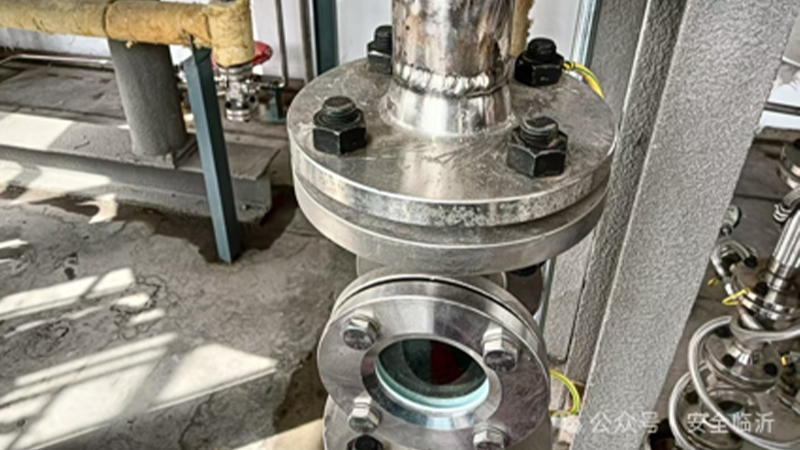Installation requirements for stainless steel pipelines
Five minutes of safety, never relaxing
In order to promote the in-depth development of safety production work in Linyi City and improve the safety production awareness of employees in chemical enterprises within the jurisdiction, the "Safety Five Minutes" activity is launched, and safety knowledge is regularly pushed. We hope everyone can read and learn in a timely manner.
Improving oneself, safety first
Problem description: There is damage on the surface of the falling film gas-phase stainless steel pipeline on the third floor of the chemical workshop. The stainless steel flange is in direct contact with the carbon steel bolt, and no measures have been taken to prevent contamination of the stainless steel flange.

According to the Construction Specification for Industrial Metal Pipeline Engineering
(GB 50235-2010)
Article 7.6.2 requires that during the installation of stainless steel and non-ferrous metal pipelines, there shall be no mechanical damage to the surface. Article 7.6.3 requires that measures should be taken to prevent pipeline contamination when installing stainless steel and non-ferrous metal pipelines.
The surface of stainless steel pipes should not be damaged, as damage can cause damage to the surface protective layer, leading to corrosion and affecting the service life of the pipes.
Stainless steel
The main reason why stainless steel cannot come into direct contact with carbon steel is to avoid electrochemical corrosion.
Stainless steel and carbon steel are two common metal materials that have a wide range of applications in industries such as construction and manufacturing. However, when these two materials come into direct contact and are in a corrosive medium, electrochemical corrosion may occur. This is because there is a potential difference between stainless steel and carbon steel, forming a microscopic primary battery. In humid environments, carbon steel will accelerate corrosion, while stainless steel is relatively unaffected. This phenomenon is called galvanic corrosion or bimetallic corrosion.
COPYRIGHT © 2025 Zhejiang Mingfeng Pipeline Equipment Co., Ltd
Enterprise information service provider:JCSW